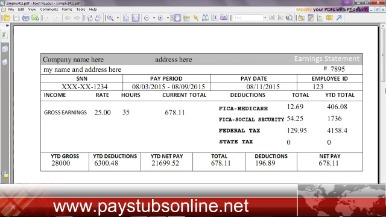Content

Discuss how Introduction To Plant Assets assets, natural resources, and intangible assets are reported and analyzed. Let’s change the subject from disposals of plant assets to intangible assets. Multiply the double-declining rate times the book value of the asset at the beginning of the period. Under the double-declining-balance method estimated residual value is ignored. The unused portion of the asset’s cost appears on the balance sheet.

In this unit, you will also learn about the related concept of depreciation, which is the process of allocating the cost of a plant asset over its useful life. There are several methods for calculating depreciation, and the choice of method depends on the nature of the asset and the company’s accounting policies. The predicted theoretical value is based on assumptions that the valuation model is properly specified and the market is efficient, which may not hold. Nonetheless, if plant assets’ fair value accurately reflects their underlying economic value as perceived by investors, the coefficient estimate for plant assets should not be significantly different from its theoretical value of 1 (Song et al. 2010). Furthermore, Prior studies find that the coefficient of financial assets is close to its theoretical value of 1when the fair value is based on observable prices in actively traded markets (Song et al. 2010). The study involved 4 major activities for estimating the size of the plant asset management market. Exhaustive secondary research has been conducted to collect information on the market.
Can The Switch From Fair Value Method To Cost Method For Plant Asset Valuation Be Justified?
Every employee might require a day’s training or more in the new system. The loss of productivity would be a material amount, and should be classified as part of the depreciable cost of the asset. The cost of training may be considered part of the depreciable cost, it the amount is material to the purchase of the asset. A brief training session for one or two machine operators will probably be an immaterial amount. The Cost IncurredIncurred Cost refers to an expense that a Company needs to pay in exchange for the usage of a service, product, or asset. This might include direct, indirect, production, operating, & distribution charges incurred for business operations.
Property, https://khybersa.org/artikelen-over-verschillende-onderwerpen/ https://intuit-payroll.org/, and equipment assets are also calledfixed assets, which are long-term physical assets. Industries that are considered capital intensive have a significant amount of fixed assets, such as oil companies, auto manufacturers, and steel companies. This implies that this quantity of transportation will expire in 8 years after which the aircrafts will be replaced to ensure safety of lives in their daily operations. The MACRS depreciation expense for each year will then be recorded as depreciation deduction for the aircrafts in the company’s balance sheets.
Engineering Equipment and Devices
With increased digitalization and the implementation of Industry 4.0, more and morestakeholders are embracing lean manufacturing techniques. Plants that use lean procedures have witnessed a 10% to 12% increase in production. The perks of these techniques encourage the adoption of digitalization in industrial processes, resulting in increased market demand. Entities with property, plant and equipment stated at revalued amounts are also required to make disclosures under IFRS 13 Fair Value Measurement. A capital asset is an asset with a useful life longer than a year that is not intended for sale in the regular course of the business’s operation.
- The item is usually just thrown in the trash, or hauled to the dump.
- The maintenance cost of prop, plant, and equipment is high as the machinery and vehicles need timely servicing.
- Companies like Emerson announced its new DataManager v8.2 analysis software solution for refineries.
- It serves as an important input for calculating depreciation for assets which affects the profitability and carrying value of the assets.
Remember that in recording the life history of an asset, accountants match expenses related to the asset with the revenues generated by it. Because measuring the periodic expense of plant assets affects net income, accounting for property, plant, and equipment is important to financial statement users. Accountants view plant assets as a collection of service potentials that are consumed over a long time. For example, over several years, a delivery truck may provide 100,000 miles of delivery services to an appliance business. A new building may provide 40 years of shelter, while a machine may perform a particular operation on 400,000 parts.
Step 2: Plant assets used for long term
Also, land held for speculation or not yet put into service is a long-term investment rather than a plant asset because the land is not being used by the business. However, standby equipment used only in peak or emergency periods is a plant asset because it is used in the operations of the business. Plant assets, like all fixed assets, are considered long-term assets with a useful life of more than a year. In addition, plant assets are actively used in the generation of revenue and are considered necessary for a company to earn a profit.
